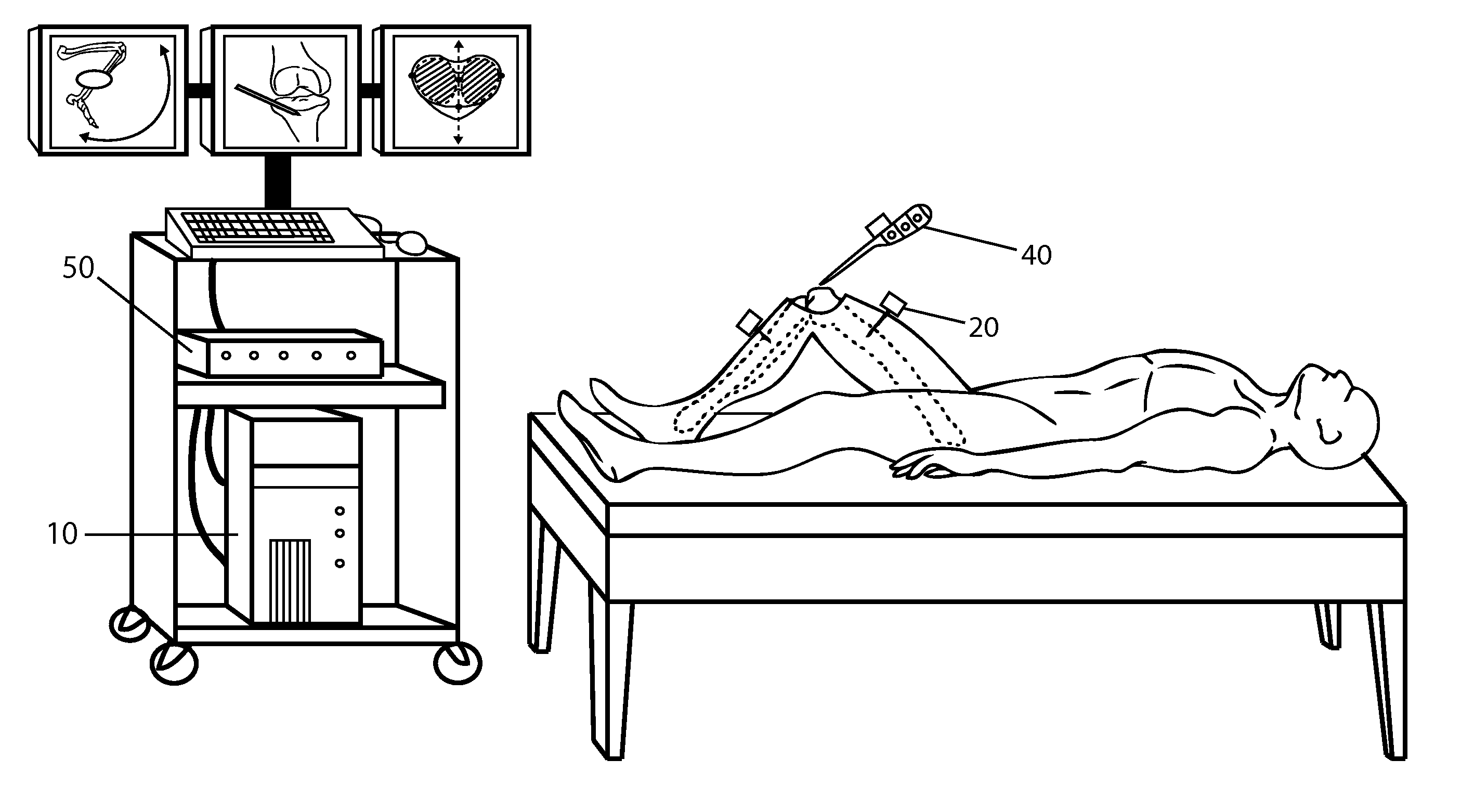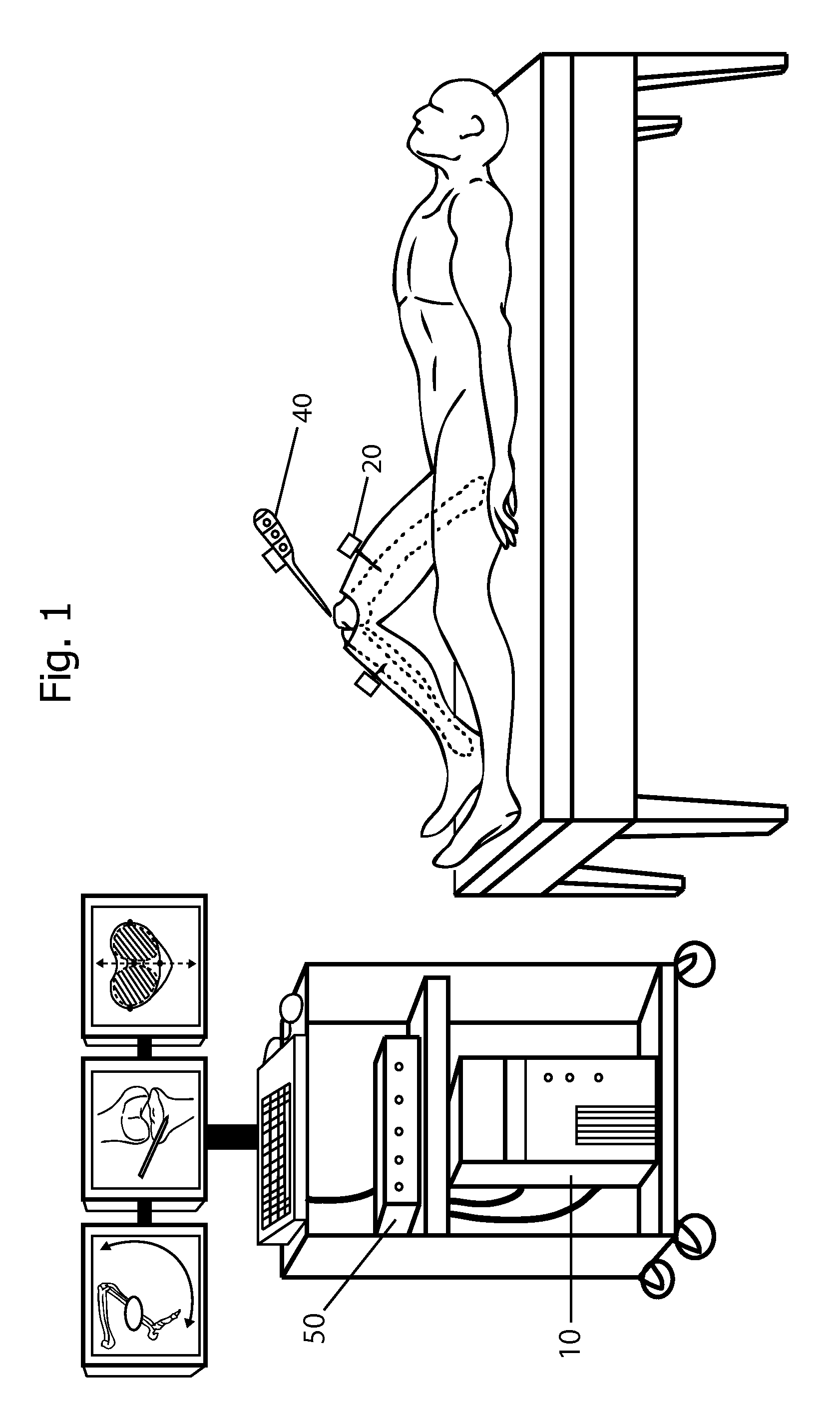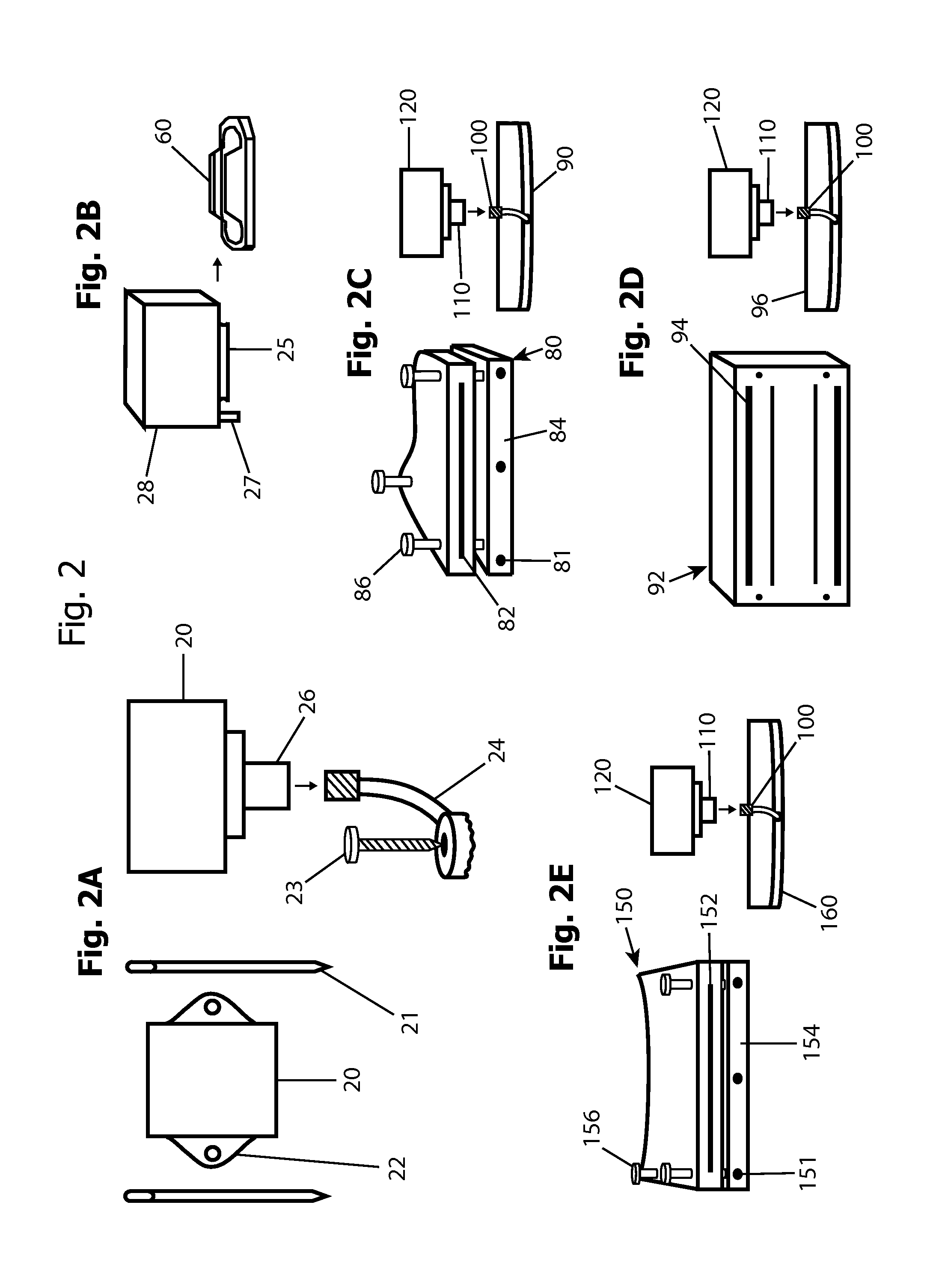Inertial Sensor Based Surgical Navigation System for Knee Replacement Surgery
a surgical navigation system and sensor technology, applied in the direction of instruments, applications, person identification, etc., can solve the problems of increased blood loss during surgery, less accurate rods, and damage to the bone marrow of the femur, so as to achieve greater accuracy and precision, less invasive
- Summary
- Abstract
- Description
- Claims
- Application Information
AI Technical Summary
Benefits of technology
Problems solved by technology
Method used
Image
Examples
Embodiment Construction
Surgical Hardware
[0089]FIG. 1 shows some of the surgical hardware of the inertial sensor based surgical navigation system. The computer system 10 is comprised of three monitors, a keyboard, a mouse, and a standard upright workstation. In an alternate embodiment of the invention, a set of touch-screen monitors is used in place of the standard monitors. Also a handheld device with a visual display such as a smartphone is used in conjunction with the monitors in alternate embodiments of the invention. The handheld device is used to interact with the computer system directly from the surgeon's hand. The purpose of the computer system is to perform calculations and to provide a user interface for the surgeon to interact with.
[0090]FIG. 1 also shows an inertial sensor hub 50 that is connected to the computer system via a USB port. The inertial sensor hub is used for wireless communications with the inertial sensors and may also be used for additional computations so as to relieve the comp...
PUM
 Login to View More
Login to View More Abstract
Description
Claims
Application Information
 Login to View More
Login to View More - R&D
- Intellectual Property
- Life Sciences
- Materials
- Tech Scout
- Unparalleled Data Quality
- Higher Quality Content
- 60% Fewer Hallucinations
Browse by: Latest US Patents, China's latest patents, Technical Efficacy Thesaurus, Application Domain, Technology Topic, Popular Technical Reports.
© 2025 PatSnap. All rights reserved.Legal|Privacy policy|Modern Slavery Act Transparency Statement|Sitemap|About US| Contact US: help@patsnap.com



